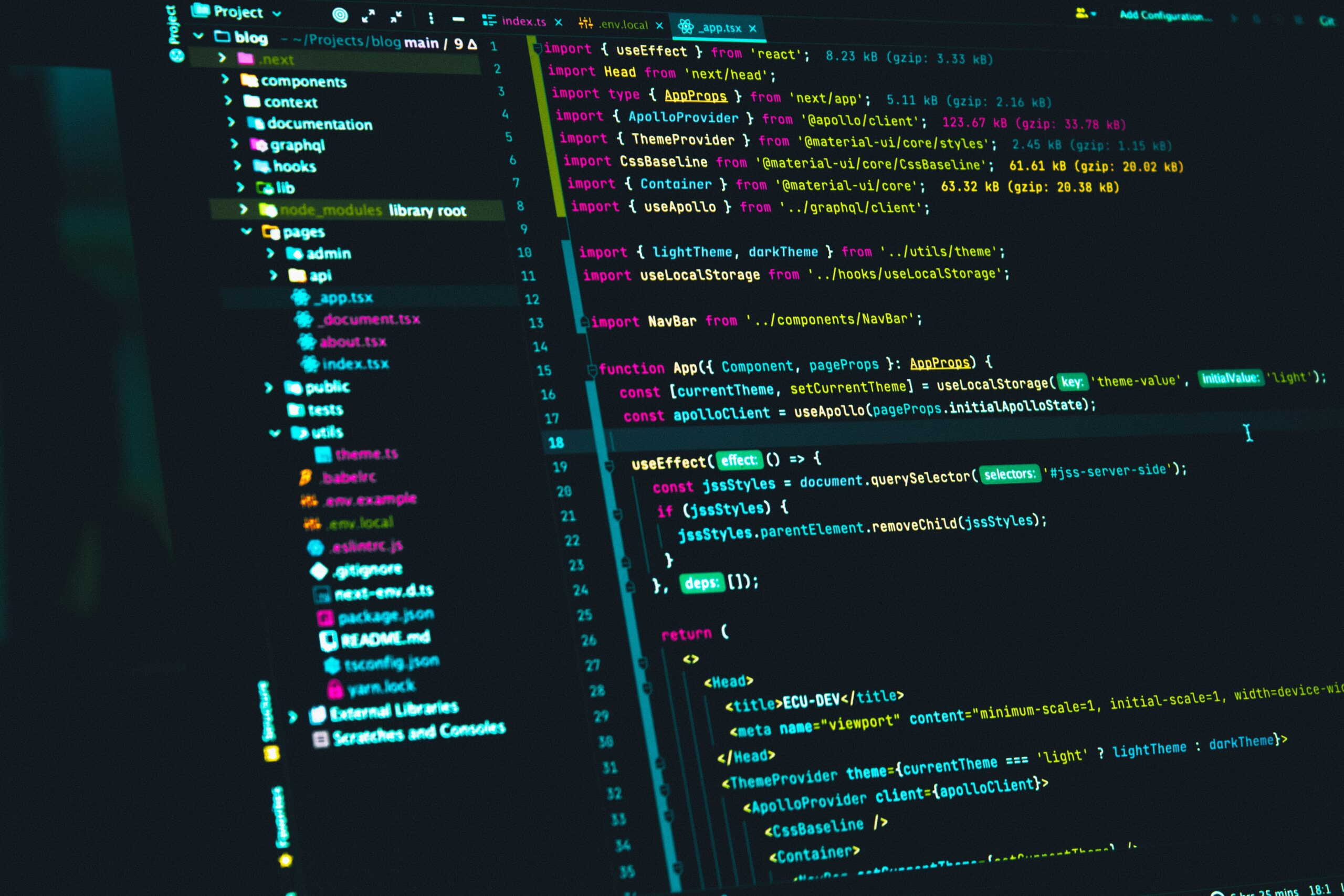Embarking on the Journey of RESTful GraphQL API Development
As the digital world continues to evolve, the need for efficient and scalable web services is more prevalent than ever before. One of the most exciting frontiers in this arena is RESTful GraphQL API development. This revolutionary approach combines the best features of RESTful and GraphQL APIs, paving the road to a more efficient and seamless web service architecture.
This comprehensive guide aims to enlighten you on everything you need to know about RESTful and GraphQL APIs. From their basic definitions, the unique features they bring to the table, to how they can be combined for optimal results. You’ll discover the importance of API development in today’s digital landscape, and why mastering these skills can set you apart in the competitive tech industry.
Did you know that over 83% of web traffic goes through APIs? With such a massive percentage, it’s no surprise that learning how to develop effective APIs is a must for any web developer. So buckle up and prepare to dive deep into the fascinating world of RESTful GraphQL API development.
Understanding RESTful API Development
RESTful API, or Representational State Transfer API, is a set of rules and conventions for building web services. It is a key component in modern web development, enabling different software applications to communicate and exchange data efficiently.
Principles of RESTful API
There are six fundamental principles of RESTful API development:
- Client-Server Architecture: The API separates the user interface from the server and data storage. This improves scalability and portability.
- Stateless: Each client request to the server must contain all the information needed to understand and process the request.
- Cacheable: Clients can cache server responses to improve performance and reduce server load.
- Uniform Interface: The API has a consistent interface, enhancing simplicity and visibility.
- Layered System: The API is structured in layers, each with specific functionality, enhancing security and flexibility.
- Code-On-Demand: Servers can provide executable code to extend client functionality.
Implementing RESTful API
Here’s how to implement a RESTful API:
- Plan: Define your resources, methods, and data formats.
- Design: Sketch the API endpoints and data structure.
- Build: Develop your API using a programming language like JavaScript, Python, or Ruby.
- Test: Use tools like Postman or Curl to test your API endpoints.
- Deploy: Use a platform like AWS, Google Cloud, or Heroku to deploy your API.
- Monitor: Use analytics tools to monitor usage and performance of your API.
Remember, RESTful API development is all about simplicity, scalability, and performance. By following these principles and best practices, you can build robust APIs that are easy to use, flexible, and fast. This is critical in RESTful GraphQL API
Exploring GraphQL API Development
As we delve into the world of API development, it’s impossible to overlook the prominent role played by GraphQL. A strong alternative to RESTful API, GraphQL offers a new approach to data fetching, enabling developers to ask for specific data and receive precisely what they want. This method is known as RESTful GraphQL API development and has become a game-changer in API development practices.
How GraphQL API Works
Unlike RESTful APIs that require loading from multiple URLs, GraphQL APIs get all data from a single endpoint. This endpoint then interprets and fulfills the query. The main steps of this process are:
- Client specifies exactly what data it needs.
- The GraphQL server interprets the request.
- The server fetches data from its data sources.
- The server returns the exact data requested by the client, reducing over-fetching and under-fetching issues.
For example, if you need user name and email, but not user age, you can specify that in your GraphQL query. This level of specificity is one of the key advantages of using GraphQL API over RESTful API.
Implementing GraphQL API
Implementing GraphQL API involves a few crucial steps:
- Define your data types and the relations between them.
- Design your schema. The schema is the GraphQL model that defines how client applications consume data.
- Implement resolvers to handle the schema fields. Resolvers provide the instructions for turning a GraphQL operation into data.
When implementing GraphQL, it’s essential to ensure proper error handling, and to secure your API by validating and authenticating user access.
According to a DevGraph survey, 43.9% of developers prefer GraphQL over REST for its efficiency in data retrieval. This preference underscores the importance of mastering GraphQL API implementation, as it’s becoming a dominant force in the world of API development.
Differences between RESTful and GraphQL API
In the realm of API development, two popular methodologies have emerged: RESTful and GraphQL. Each approach offers its unique benefits and drawbacks, and understanding these differences is crucial for modern developers. In this section, we delve into the key differences between RESTful GraphQL API development and explore when to use each methodology.
Comparison of RESTful and GraphQL API
RESTful and GraphQL APIs offer different ways of managing data exchange between servers and clients. Here are the key differences:
- Data Fetching: RESTful APIs require multiple round trips to different endpoints to fetch related data. On the other hand, GraphQL APIs use a single request to retrieve all related data, reducing the amount of data transferred over the network.
- Over-fetching and Under-fetching: In RESTful APIs, there’s a risk of over-fetching or under-fetching of data because the server defines what data is sent for each endpoint. GraphQL APIs solve this problem by allowing the client to specify exactly what data is needed.
- Versioning: RESTful APIs often require versioning as the data structure changes over time, leading to endpoint proliferation. GraphQL APIs don’t need versioning as they allow the addition of new fields to the data structure without impacting existing queries.
A study by HowToGraphQL noted that developers found GraphQL APIs to be more flexible and efficient than RESTful APIs, owing to these differences.
Choosing between RESTful and GraphQL API
The choice between RESTful and GraphQL API development depends on your specific needs and circumstances. Here are some factors to consider:
- Complexity of Data: If your application requires complex, nested data, GraphQL may be a better choice due to its ability to fetch related data in a single request.
- Development Resources: GraphQL APIs may require more resources to set up initially but could save time in the long run by reducing the need for versioning and endpoint management.
- Performance: For mobile applications where bandwidth and latency are concerns, GraphQL’s single request approach may be more efficient.
Remember, there’s no one-size-fits-all answer. An analysis by InfoQ suggested that many companies successfully use a combination of RESTful and GraphQL APIs to meet their diverse needs.
Conclusion
In the rapidly evolving landscape of technology, API development has become a crucial link in the chain of digital progress. As we’ve explored, both RESTful and GraphQL offer unique features and advantages that developers can leverage according to their specific needs.
Whether you’re a seasoned professional or just starting your journey, mastering these tools will undeniably enhance your portfolio. The ability to create robust and efficient APIs is a skill that’s in high demand in today’s market.
There’s a whole world of opportunities waiting for you in the realm of API development. Remember, the only way to truly understand and appreciate the power of these technologies is to dive in and start using them.
Let’s Get Started
Why wait? Start your journey with RESTful GraphQL API development today. There’s a wealth of resources available online to help you get going. We urge you to take advantage of them and start building your own APIs.
As you embark on this exciting journey, remember that every expert was once a beginner. Keep learning, keep exploring, and most importantly, keep coding.
Happy coding!
Frequently Asked Questions
What is RESTful GraphQL API development?
RESTful GraphQL API development refers to the process of building APIs that adhere to the principles of both Representational State Transfer (REST) and GraphQL. REST is a software architectural style that defines set of constraints to be used for creating web services. On the other hand, GraphQL is a query language for APIs and a runtime for executing those queries with your existing data. By combining these two concepts, RESTful GraphQL API development allows developers to design APIs that can deliver more efficient, powerful, and flexible services. It offers the simplicity and statelessness of REST while also leveraging the data-specific querying capabilities of GraphQL.
What are the differences between RESTful and GraphQL API?
Both RESTful and GraphQL APIs are used to build scalable web services, but they operate in different ways. RESTful API is structured around resources, which are accessed via HTTP methods like GET, POST, PUT, and DELETE. It’s simple and stateless but can lead to over-fetching or under-fetching of data. On the other hand, GraphQL API, instead of multiple endpoints, it has a single endpoint that uses a query language for APIs. It allows clients to specify exactly what data they need, which reduces the amount of data that needs to be transferred over the network and eliminates the problem of over-fetching or under-fetching.
What are the benefits of GraphQL API over RESTful API?
GraphQL API has several advantages over RESTful API. First, with GraphQL, clients can specify exactly what data they need, which can reduce the amount of data transferred over the network and improve performance. Second, GraphQL has a type system, which provides a contract for the data and ensures the server only returns valid data. It also allows for introspection, meaning tools can automatically generate documentation or UI. Lastly, GraphQL supports real-time updates with subscriptions, making it easier to maintain up-to-date data on the client side compared to RESTful API.
How can I implement RESTful GraphQL API development?
Implementing RESTful GraphQL API development requires understanding both REST and GraphQL principles. First, define your data models and relationships. Then, create a GraphQL schema based on these models. Use GraphQL’s query language to describe how clients should request data. Next, set up a GraphQL server to handle these requests and return the requested data. Now, you can build RESTful endpoints that map to the GraphQL schema. Use HTTP methods (GET, POST, PUT, DELETE) to interact with these endpoints. Test your API to ensure it’s working well and returning the expected data. Keep refining until you have a functional, efficient RESTful GraphQL API.
Where can I learn more about API development?
There are many resources available for learning more about API development. Websites like MDN Web Docs, W3Schools, and Stack Overflow provide comprehensive guides and communities for developers. For more structured learning, consider online courses from platforms like Coursera, Udemy, or LinkedIn Learning, which offer classes on RESTful and GraphQL API development. Books like ‘RESTful Web APIs’ by Leonard Richardson, ‘Learning GraphQL’ by Eve Porcello, and ‘APIs: A Strategy Guide’ by Daniel Jacobson are also excellent resources. Don’t forget to check out the official documentation for REST and GraphQL as well.




